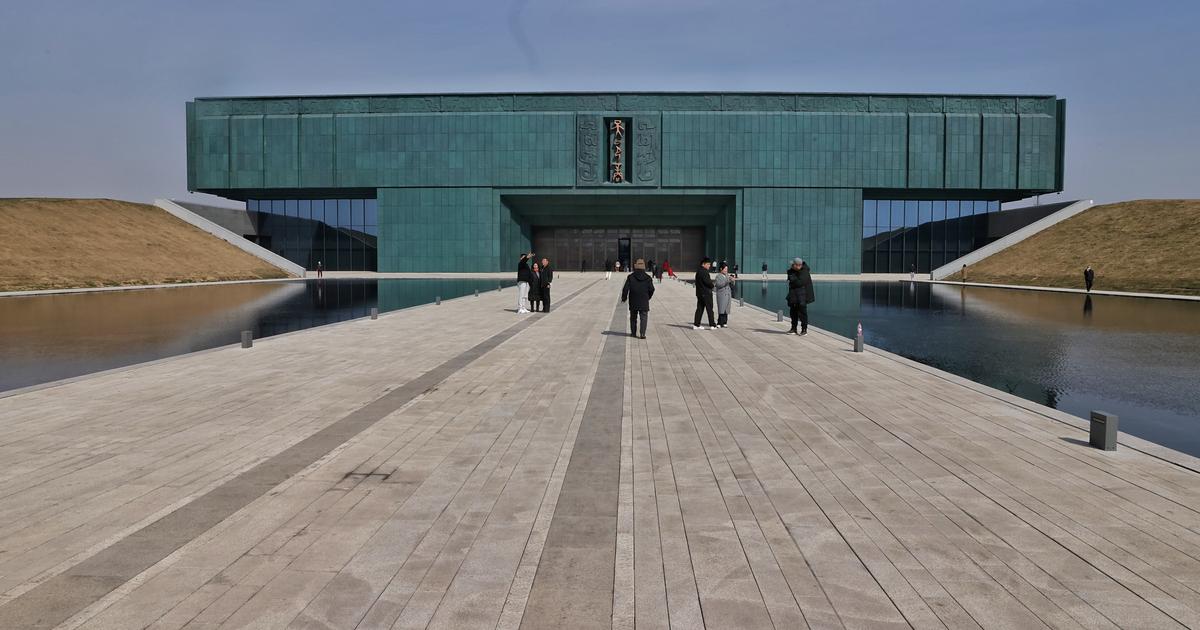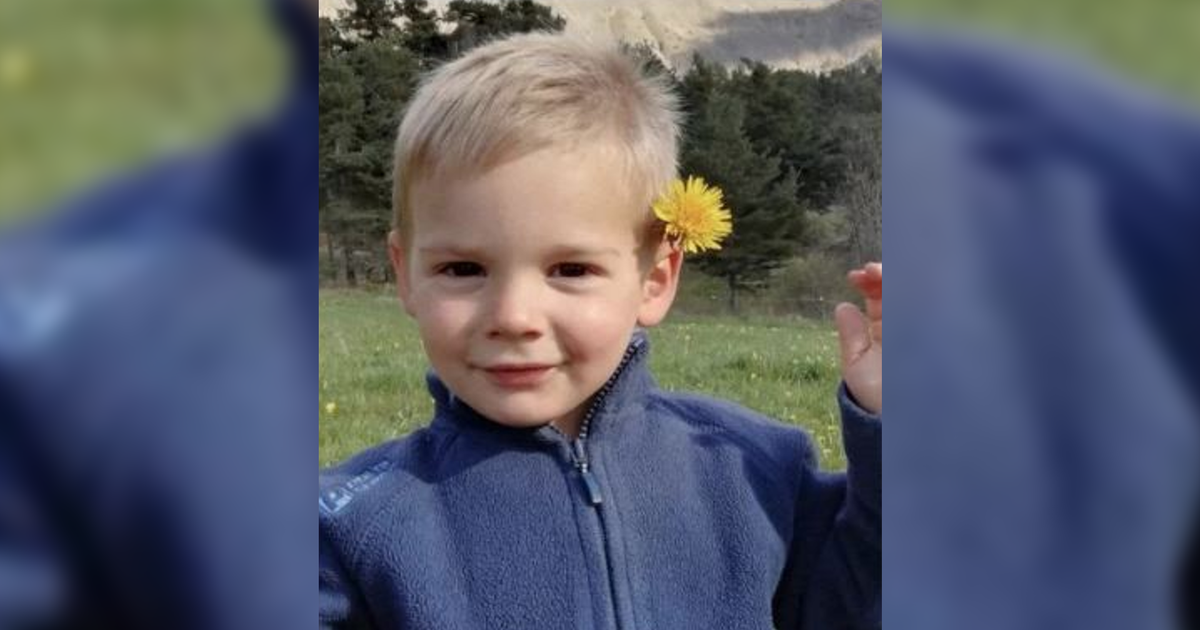We are since '89
all articles
In the office of Johannes Krause are lower leg bones, teeth and skull parts. A new delivery has just arrived: archaeologists from Croatia have sent him the remains of a girl in his office, carefully packed in airtight plastic bags, a whole cardboard box full. Johannes Krause is archaeologist and works with the dead - those who died long ago. Like the girl before him who died more than 4000 years ago, not far from the Adriatic Sea.
Krause was born in Leinefelde in Thuringia and is currently researching at the Max Planck Institute for the History of Humanity in Jena. The 39-year-old's laboratory specializes in the analysis of ancient DNA, creating a combination of the disciplines of archeology and genetics. It is one of a handful of facilities worldwide that regularly provide spectacular research on human history.
Even in GDR times, Jena was a place of thinkers and inventors. At that time, as today, the Carl Zeiss optics company has shaped the location of a science-oriented business. The football club of the city, after all three-time GDR champion, is still Carl Zeiss Jena today. Thanks to new federal and state funding programs, research is booming in the city. The science location is experiencing a "moment of glory" at the moment, wrote the Ostthüringer Zeitung recently. Three Max Planck, two Leibnitz, one Fraunhofer and one Helmholtz Institute are located here. Thousands of students of the Friedrich Schiller University belong to the cityscape, about 4500 scientists work in Jena.
Krause is a little star among all these researchers. Already at the age of 34, he was director of a Max Planck Institute - until then nationwide, the youngest on such a post. Krause came to genetic research through a combination of early interest and pragmatism. As a child, he became interested in dinosaurs and archeology, when he was devouring rows of "What's Was" books sent to him by relatives from the West. But after graduating from high school he wanted to "study something with the future", also financially. Archeology sounded the opposite, while genetic research was promising. So he enlisted in biochemistry. It was the beginning of a lightning career.
She started in Leipzig with Svante Pääbo, a Swedish physician and biologist. While still a student, Krause moved to the Institute of Sweden, which is considered the founding father of archaeogenetics. He succeeded already in the eighties to extract DNA from an Egyptian mummy. Pääbo decisively advanced the subject and also recognized Krause's talent. "At the time, I spent more time at the institute than at the university," recalls Krause. In Leipzig, the researchers worked on the decoding of the entire Neanderthal gene. After a stopover at the University of Tübingen, the offer came from Jena.
more on the subject
There he works on the research of old genetic material - so-called ancient DNA. It is in every cell of our body. In the bones, it can last for tens of thousands of years even after the death of a human being. The genetic material in the human remains resembles a hard disk from which researchers can extract valuable data. However, after thousands of years, these gene drives often suffer damage, data packets are erased or damaged. The art of archaeologists is to collect, sort, and read out the genetic information.
The insights that Krause and his team draw from old bones have the potential to frustrate generations of archaeologists. Her analysis of human genetic material has in part allowed completely new glimpses of the past and overturned accepted theories. Where antiquarians argued over interpretations of finds, archeogenetics can provide clear answers or raise entirely new questions.
A few weeks ago, an investigation by the institute revealed that the bones of hundreds of people in a lake in the Himalayas came in part from Europeans. A completely surprising finding, corresponding archaeological traces had not existed. But the results of the researchers from Jena are clear.
Guido Brandt
Researchers from Jena processing old DNA in the cleanroom laboratory
"Recently, an archaeologist at a conference acknowledged that he was wrong in the light of our findings, and that's part of it," says Krause, commenting on such success with a healthy amount of understatement.
The bone shipment from Croatia originates in the Cetina Valley in the southeast of the country and will be examined in the coming days. To get to the DNA, tiny samples are enough. In the laboratory, the researchers use a small drill to extract around 400 milligrams of powder from their bones - for example, a knife tip. Enriched with a liquid chemical, many DNA snippets float in it. Not only those of the deceased, but also those of bacteria and fungi that have attacked the bones. Or by archaeologists and museum staff who later touched her.
more on the subject
In order to be able to separate the wanted DNA from unwanted DNA traces, the researchers make use of a trick: they break up the double strand of the genetic material and give the genetic material of today's humans to be fixedly attached to a small carrier. The four recent base pairs now connect to the appropriate places in the old genome. The rest, such as the genetic material of plants, can simply be washed away. In a later step, more and more efficient sequencing machines read the DNA and compare it with already known samples.
If geneticists want to understand how humans once spread on the continents, then they look mainly for mutations in the so-called mitochondrial DNA. It occurs in cell power plants and is inherited only by the mother. By comparing this genetic material and its mutations, the researchers can draw conclusions about kinship relationships. By comparing the archaeological sites can then draw conclusions on the migratory movements of people in our prehistory.
The data shows, for example, how thousands of years ago Anatolian farmers spread across Europe - and brought agriculture with them. Previously, some archaeologists had assumed that the people living in Europe until then had copied their agricultural technique in Anatolia. Now it turned out that the population had mingled with the immigrants in a long process. Genetically many of us carry traces of these people in themselves.
"We are all migrants"
Such findings do not suit everyone. And certainly not in Krause's home in Thuringia, where the AfD with its right wing Björn Höcke received more votes than the CDU in the last elections and became the second strongest force. Krause is also involved in current social debates and puts his data on the table during discussions. After the wave of refugees a few years ago, he announced that migration had been part of European culture for thousands of years. "We are all migrants," was the title of an interview in SPIEGEL.
Only recently did he participate with other scientists in the "Jena Declaration". In this Krause distanced himself from the evolutionary biologist Ernst Haeckel from Jena and the concept of race. Haeckel had contributed in the 19th century with his arrangement of human races in a pedigree to racism.
About the Jena Declaration someone wrote on Twitter, it was laughable, who may call themselves scientists today. Krause will not prevent this in the future from carrying the results of his research into society. "We only show the data," he says. The genes are not lying. "















